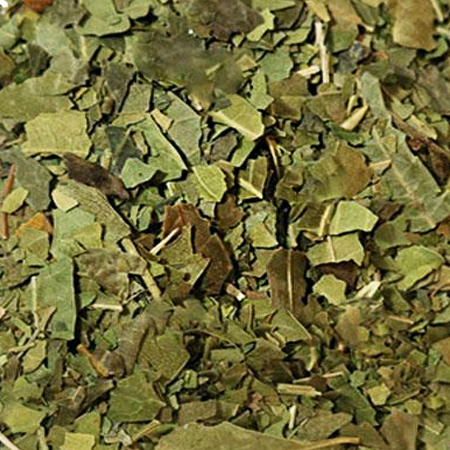NEEM LEAVES C/S
Product Name: NEEM LEAVES C/S
Botanic Name: Azadirachita Indica
Neem is a fast-growing tree that can reach a height of 15-20 m (about 50-65 feet), rarely to 35-40 m (115-131 feet). It is evergreen, but in severe drought it may shed most or nearly all of its leaves. The branches are wide spread. The fairly dense crown is roundish or oval and may reach the diameter of 15-20 m in old, free-standing specimens.
1. All parts of the tree (seeds, leaves, flowers and bark) are used for preparing many different medical preparations.
2. Neem oil is used for preparing cosmetics (soap, shampoo, balms and creams, for example Margo soap), and is useful for skin care such as acne treatment, and keeping skin elasticity.
3. Besides its use in traditional Indian medicine the neem tree is of great importance for its anti-desertification properties and possibly as a good carbon dioxide sink.
4. Practitioners of traditional Indian medicine recommend that patients suffering from chicken pox sleep on neem leaves.
5. Neem gum is used as a bulking agent and for the preparation of special purpose food (for diabetics).
6. Aqueous extracts of neem leaves have demonstrated significant ant diabetic potential.
7. Traditionally, teeth cleaning was conducted by the chewing of slender neem branches. Neem twigs are still collected and sold in markets for this use, and in India one often sees youngsters in the streets chewing on neem twigs.
1. All parts of the tree (seeds, leaves, flowers and bark) are used for preparing many different medical preparations.
2. Neem oil is used for preparing cosmetics (soap, shampoo, balms and creams, for example Margo soap), and is useful for skin care such as acne treatment, and keeping skin elasticity.
3. Besides its use in traditional Indian medicine the neem tree is of great importance for its anti-desertification properties and possibly as a good carbon dioxide sink.
4. Practitioners of traditional Indian medicine recommend that patients suffering from chicken pox sleep on neem leaves.
5. Neem gum is used as a bulking agent and for the preparation of special purpose food (for diabetics).
6. Aqueous extracts of neem leaves have demonstrated significant ant diabetic potential.
7. Traditionally, teeth cleaning was conducted by the chewing of slender neem branches. Neem twigs are still collected and sold in markets for this use, and in India one often sees youngsters in the streets chewing on neem twigs.
Tags: NEEM LEAVES C/S









